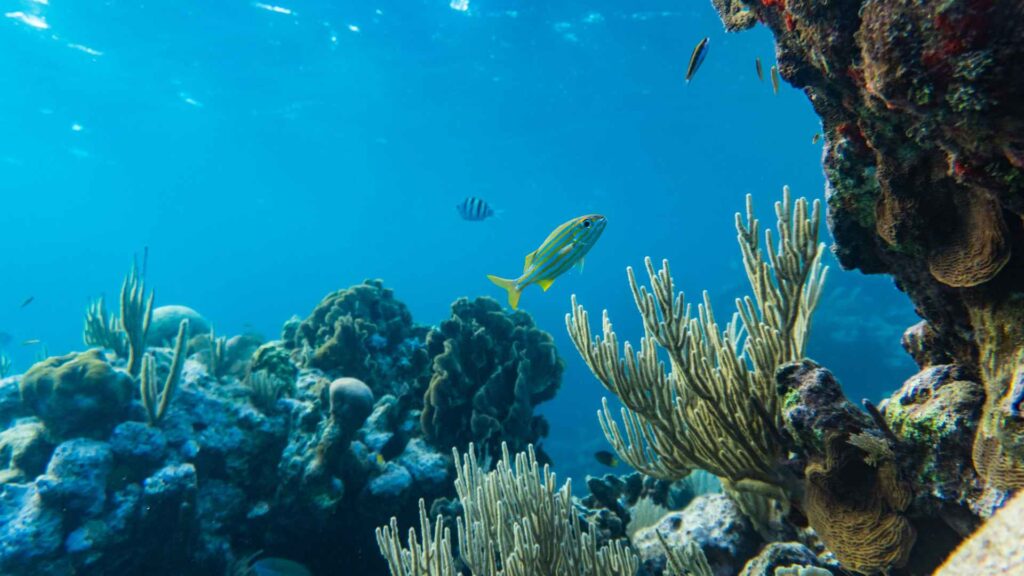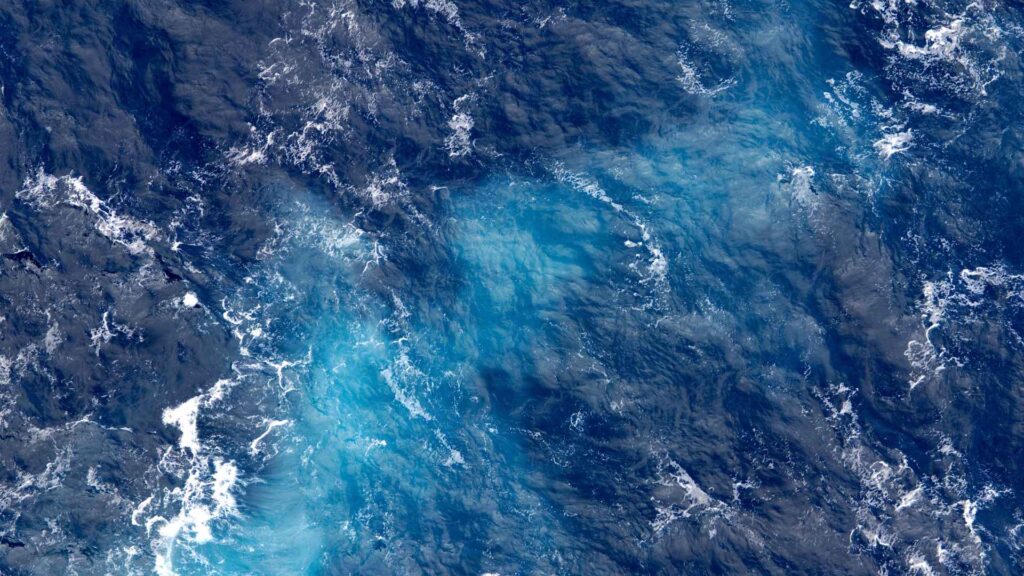The ocean covers over 70% of Earth’s surface and is teeming with incredible secrets and surprises.
From mysterious creatures to stunning ecosystems, every dive into ocean knowledge unveils wonders.
Explore 145 captivating fun facts about the ocean, grouped into exciting categories, and discover why this vast blue world is so extraordinary.
The Ocean’s Depths and Mysteries
- The Mariana Trench, the ocean’s deepest point, is over 36,000 feet deep—deeper than Mount Everest is tall.
- Only about 5% of the ocean has been explored, leaving 95% as a mystery.
- The Challenger Deep, part of the Mariana Trench, has been visited by fewer people than the moon.
- There are underwater waterfalls, the largest being the Denmark Strait cataract, which drops water over 11,500 feet.
- Hydrothermal vents on the ocean floor reach temperatures of up to 750°F.
- Oceanic trenches hold the oldest seafloor on Earth, some over 180 million years old.
- Bioluminescent creatures, like the anglerfish, light up the ocean’s dark depths to attract prey.
- Deep-sea gigantism causes creatures like giant squids to grow larger in deeper waters.
- The pressure in the deepest ocean parts is over 8 tons per square inch.
- Some underwater volcanoes are taller than land-based mountains.
- Ancient shipwrecks are often preserved in deep water due to low oxygen levels.
- “Zombie worms” survive by feeding on whale bones on the seafloor.
- The ocean contains an estimated 20 million tons of gold, mostly dissolved in seawater.
- At extreme depths, certain fish have antifreeze proteins to survive freezing temperatures.
- Mysterious sounds like the “Bloop” are believed to originate from underwater phenomena or creatures.

Incredible Marine Life
- The blue whale is the largest animal on Earth, weighing as much as 33 elephants.
- Jellyfish have existed for over 500 million years, making them older than dinosaurs.
- Octopuses have three hearts and blue blood.
- Clownfish can change their gender when needed for reproduction.
- A group of dolphins is called a pod, and they use unique whistles to communicate.
- Sharks don’t have bones; their skeletons are made of cartilage.
- Sea turtles can live for over 100 years.
- The mantis shrimp has the world’s fastest punch, moving at 50 mph.
- Seahorses are one of the only animals where males give birth.
- Starfish have no brains or blood; they use seawater to circulate nutrients.
- Some species of fish can glow in the dark, thanks to bioluminescence.
- Killer whales, or orcas, are apex predators with no natural enemies.
- Dolphins have been known to protect humans from sharks.
- The immortal jellyfish (Turritopsis dohrnii) can revert to its juvenile state indefinitely.
- Penguins, though flightless, are incredible swimmers and can dive up to 1,850 feet.
Amazing Ocean Ecosystems
- Coral reefs are home to 25% of all marine species.
- The Great Barrier Reef is the largest living structure on Earth.
- Mangrove forests act as nurseries for many marine species.
- Kelp forests grow up to 2 feet per day in ideal conditions.
- The Arctic Ocean is the smallest and shallowest of the world’s oceans.
- Seagrass meadows play a crucial role in carbon storage, even more than forests.
- Hydrothermal vents support unique ecosystems not reliant on sunlight.
- Salt marshes act as natural flood barriers.
- Estuaries are where freshwater meets saltwater, creating biodiversity hotspots.
- Cold seeps on the ocean floor release methane, supporting specialized organisms.
- Polar regions are critical for regulating Earth’s climate.
- Coral polyps, tiny animals, build reefs by secreting calcium carbonate.
- Sponge reefs, made by glass sponges, are some of the oldest living organisms.
- Whale fall ecosystems thrive around the carcasses of dead whales on the ocean floor.
- The Sargasso Sea is a unique ocean area defined by surrounding currents, not land.

Historical and Cultural Ocean Facts
- The ocean inspired countless myths, including mermaids and sea monsters.
- Ancient sailors used the stars to navigate across vast seas.
- The Titanic lies about 12,500 feet below the North Atlantic Ocean.
- The term “seven seas” originates from ancient literature.
- Atlantis, the mythical underwater city, has been speculated about for centuries.
- The first submarine, built in 1620, was a wooden vessel coated in greased leather.
- Early diving suits were heavy and cumbersome, weighing up to 200 pounds.
- Ancient cultures believed the ocean was the edge of the world.
- Salt was once as valuable as gold due to its use in preserving food.
- Underwater archaeology has uncovered ancient cities submerged by rising seas.
- The Age of Exploration brought maritime trade routes into prominence.
- Whaling ships once hunted marine mammals to near extinction for oil and blubber.
- The first known ocean maps date back to 600 BCE.
- Pearl diving was an essential industry in ancient coastal communities.
- The Bermuda Triangle is infamous for mysterious ship and plane disappearances.

Bonus Ocean Fun Facts
- The ocean produces over 50% of the world’s oxygen through phytoplankton.
- Sea otters wrap themselves in kelp to avoid drifting while they sleep.
- The ocean’s salinity comes from millions of years of dissolved minerals.
- The Pacific Ocean is larger than all landmasses combined.
- The loudest ocean sound recorded is the “Upsweep,” of unknown origin.
- Sea sponges are considered the simplest animals.
- The deepest scuba dive record is over 1,090 feet.
- Sand on beaches often comes from eroded coral or volcanic activity.
- The Arctic Ocean’s ice reflects sunlight, helping regulate global temperatures.
- Some fish, like flounders, can camouflage by changing color.
- Bottlenose dolphins can recognize themselves in mirrors.
- The largest coral reef systems take thousands of years to form.
- Tuna can swim at speeds of up to 43 mph.
- Barnacles attach themselves permanently to surfaces, including ship hulls.
- The ocean holds enough salt to cover all landmasses 500 feet deep.
- Swordfish are capable of heating their eyes for better vision.
- Sharks have been around for over 400 million years.
- An octopus can squeeze through any gap larger than its beak.
- The ocean has more historical artifacts than all museums combined.
- Greenland sharks live up to 400 years.
- The phrase “dead zones” refers to areas with little to no oxygen.
- Dolphins sleep with one eye open.
- Squid can grow up to 40 feet long.
- Some fish communicate by making noises with their swim bladders.
- Waves are caused by wind transferring energy to the water.
- Tiger sharks are known as “garbage eaters” for consuming non-food items.
- Algae blooms can produce toxic red tides.
- The black dragonfish can emit infrared light, invisible to most predators.
- Plankton forms the base of the oceanic food chain.
- The ocean absorbs about 30% of human-made CO2 emissions.
- Orcas use echolocation to hunt in murky waters.
- Some jellyfish species are venomous enough to kill a human in minutes.
- Underwater canyons rival the size of the Grand Canyon.
- Squid ink contains melanin, the same pigment found in human skin.
- The ocean is estimated to contain over 100 million tons of plastic waste.
- Hurricanes form over warm ocean waters.
- Fish scales are often used in cosmetics and nail polish.
- Sea urchins can regenerate lost spines.
- The ocean’s average depth is about 12,100 feet.
- Whales’ songs can travel thousands of miles underwater.
- Lobsters communicate using their urine.
- The moon’s gravity causes tides.
- The ocean floor is mapped less than the surface of Mars.
- Some sharks are bioluminescent.
- The Baltic Sea is one of the least salty bodies of water in the ocean.
- Blue-ringed octopuses are among the most venomous creatures in the sea.
- The ocean moderates the Earth’s climate by redistributing heat.
- Parrotfish create sand by excreting digested coral.
- Some marine organisms can photosynthesize.
- Coral reefs are dying due to climate change and ocean acidification.
- Sea cucumbers can eject their internal organs as a defense mechanism.
- The ocean is home to over 230,000 known species, with millions yet to be discovered.
- Blue whales can consume up to 4 tons of krill daily.
- Leatherback sea turtles can dive to depths exceeding 4,000 feet.
- Deep-sea fish often have large eyes to capture minimal light.
- The ocean’s currents are like conveyor belts, transporting heat and nutrients worldwide.
- Underwater lakes and rivers, known as brine pools, form due to high salinity.
- The Gulf Stream carries warm water from the tropics to Europe, influencing its climate.
- Sharks can detect a drop of blood in a million gallons of water.
- Sea snakes are some of the most venomous reptiles but rarely bite humans.
- Some crabs grow their shells by absorbing calcium carbonate from the ocean.
- The Arctic Ocean is covered in ice for most of the year but still supports diverse marine life.
- The ocean floor contains methane hydrates, a potential future energy source.
- Icebergs are made of freshwater and float because they’re less dense than seawater.
- The largest tsunami ever recorded was over 1,700 feet tall in Lituya Bay, Alaska.
- Some octopuses can mimic other sea creatures to avoid predators.
- The box jellyfish is considered one of the deadliest creatures in the ocean.
- Whales play a role in ocean ecosystems by redistributing nutrients through “whale falls” and excrement.
- Fish scales have been used in traditional medicine for centuries.
- The underwater city of Heracleion was rediscovered after being submerged for over 1,200 years.
- The sea otter’s fur is the densest of any animal, with up to a million hairs per square inch.
- Lobsters were once considered “poor man’s food” in colonial America.
- Crabs can walk sideways and even climb trees in some species.
- The largest jellyfish, the lion’s mane, has tentacles over 120 feet long.
- The deepest point in the Atlantic Ocean is the Puerto Rico Trench, at 27,841 feet.
- Some eels can generate electricity to stun prey or defend themselves.
- Pufferfish inflate their bodies as a defense mechanism.
- Coral reefs grow best in waters between 68°F and 82°F.
- Swordfish can swim at speeds up to 60 mph.
- The ocean absorbs heat from the sun, playing a key role in regulating the planet’s temperature.
- The smallest ocean on Earth, the Arctic Ocean, covers about 5.4 million square miles.
- Seagulls can drink saltwater thanks to glands that remove the salt.
- Some marine worms glow to attract mates or ward off predators.
- The Pacific Ocean covers more area than all the continents combined.
- The Dead Sea, while not technically an ocean, is so salty that people float effortlessly.
- Flying fish can leap out of the water and glide for over 600 feet.
- The deepest diving mammal, the Cuvier’s beaked whale, can reach depths of nearly 10,000 feet.
- There are underwater caves that extend for miles beneath the seafloor.
- Sea stars can regenerate entire limbs, and some species can grow a new body from a single arm.
- Albatrosses can travel thousands of miles without landing, using ocean winds to glide.
- Giant tube worms near hydrothermal vents can grow up to 8 feet long.
- Oceanic trenches are formed by tectonic plate movements, often at subduction zones.
- Some plankton emit light in response to movement, creating glowing waves.
- The ocean contains enough water to fill about 352 quintillion gallons.
- Certain whale species sing songs that change every few years.
- The sand tiger shark swallows air to help it maintain buoyancy.
- Some barnacles attach to whales and other marine animals to hitch a ride through the ocean.
- The Arctic and Antarctic oceans are crucial for global carbon storage.
- The Indian Ocean is the warmest of all the world’s oceans.
- Deep-sea anglerfish use bioluminescent lures to attract prey in the darkness of the deep ocean.
The ocean is a treasure trove of wonders, from its mysterious depths to its vibrant ecosystems.
These 145 fun facts showcase the incredible diversity, beauty, and importance of the ocean, reminding us of its vast and untapped potential!
